We’ve found thousands and thousands of exoplanets now. And spacecraft like TESS will likely find thousands and thousands more of them. But most exoplanets are gassy giants, molten hell-holes, or frozen wastes. How can we find those needles-in-the-haystack habitable worlds that may be out there? How can we narrow our search?
Well, first of all, we need to find water. Oceans, preferably, since that’s where life began on Earth. And according to a new study, those oceans need to circulate in particular ways to support life.
On Earth ocean circulation plays a huge role in climate and habitability. All of the Earth’s regional currents combine together to create the planet’s Global Conveyor Belt (GCB), also called thermohaline circulation. It’s a complex topic, but altogether, the GCB is driven by wind, salinity, thermal differences, and bathymetry, or the topography of the ocean floor.
Without all that circulation, the Earth’s climate would be very different, and some areas are only temperate because of it. For example, the UK is quite temperate for its latitude, and that’s thanks to the current known as the Atlantic Meridional Overturning Circulation (AMOC).
But more specifically, it’s the upwelling currents that this study looks at, because they create the nutrient-rich regions where life is abundant and concentrated.
“This study starts the process of assessing the impact that ocean circulation has on nutrient cycling, biological productivity and, potentially, the detectability of life on exoplanets.”
Study Co-Author Dorian Abbott, University of Chicago
The new study exploring ocean currents and habitability is titled “Oceanographic Considerations for Exoplanet Life Detection.” The lead author is Stephanie Olson, a planetary scientist at the University of Chicago. The study is published in The Astrophysical Journal.
We’re only in the infancy of trying to find planets that might host life. We’re barely over our surprise at finding planets around every star, or nearly every star. But all of our exoplanet science is done from light years away, as we try to guage a distant world’s temperature, atmosphere, and a host of other characteristics. Soon, we’ll have telescopes capable of analyzing exoplanet atmospheres, and maybe even getting images.
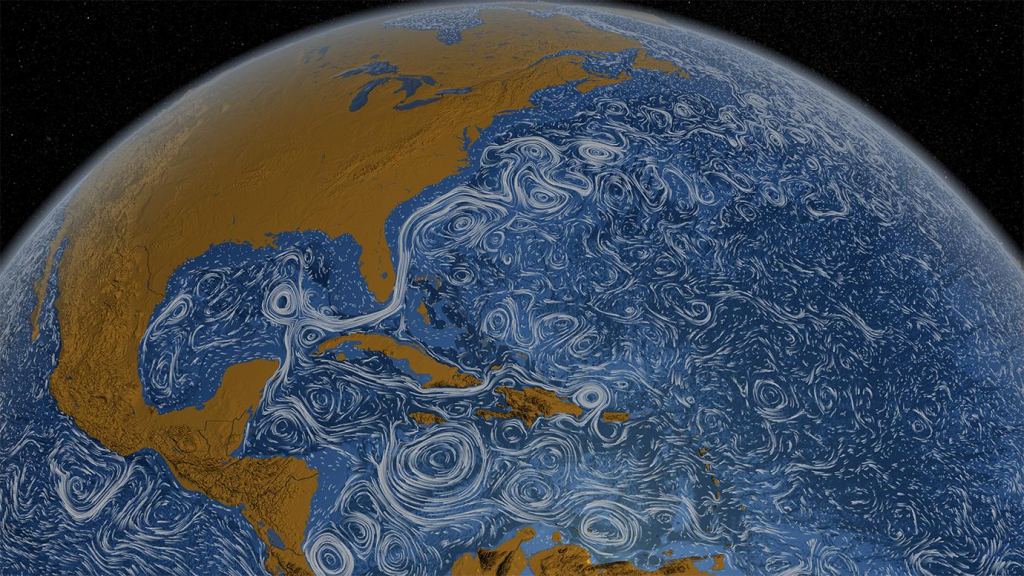
Credit: NASA/Goddard Space Flight Center Scientific Visualization Studio, Public Domain, https://commons.wikimedia.org/w/index.php?curid=37108971
But we need reliable models to guide us in our search for habitable worlds. We need models and analysis that go beyond just climate. This new study presents a model that the authors say can “explore ocean dynamics and the resulting ocean habitats on planets differing from Earth.”
“The small amount of previous work on exoplanet oceans focused mostly on their climate impact,” said co-author and UChicago associate professor Dorian Abbot. “This study starts the process of assessing the impact that ocean circulation has on nutrient cycling, biological productivity and, potentially, the detectability of life on exoplanets.”
Life in Earth’s oceans is concentrated in the thin top layer that recieves energy from the Sun. There, photosynthetic organisms can do their thing, taking in atmospheric carbon, emitting oxygen, and reproducing and dying. When they die, gravity pulls all of those dead organisms—and nutrients—down to the bottom.
“If you look at life in our oceans, it is overwhelmingly concentrated in regions where there is upwelling.”
Lead Author Stephanie Olson, University of Chicago
“If you look at life in our oceans, it is overwhelmingly concentrated in regions where there is upwelling,” said lead author Olson, a T.C. Chamberlin Postdoctoral Fellow in the Department of Geophysical Sciences.
For life to thrive, all of those nutrients need to find their way back up to the life-supporting, Sunlit region at the top of the ocean. It has to be recycled. Upwelling currents do that, and we know how important they are on Earth. But what about exoplanets?
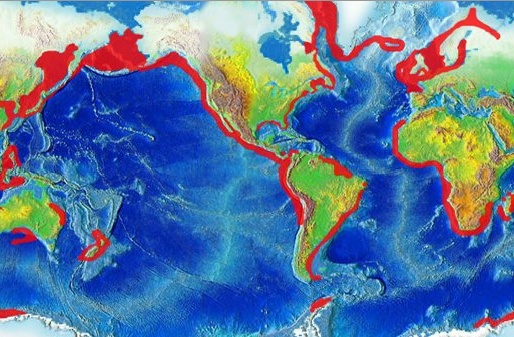
From the study: “Despite their importance, we lack a rigorous understanding of how ocean upwelling, the mixed layer depth, and the transfer of marine biosignatures to the atmosphere may differ among the diversity of habitable exoplanets.”
This all might sound like a bit of a stretch. How—from tens, hundreds, possible even thousands of light years away—can we detect the type of upwelling currents that support life? Future instruments might make that possible, but for now, a different approach is required.
This study points out that we can start with observable traits. Things like size and rotation rate, which can influence upwelling currents. As the authors write, “It is thus necessary to understand the sensitivity of ocean circulation patterns to observable planetary parameters…”
“We found that planets that rotate slower than Earth, have higher surface pressure than Earth and have saltier oceans than Earth may all experience greater upwelling. That might lend itself to more active photosynthetic life and that may ultimately manifest as more detectable photosynthetic life,” Olson said.
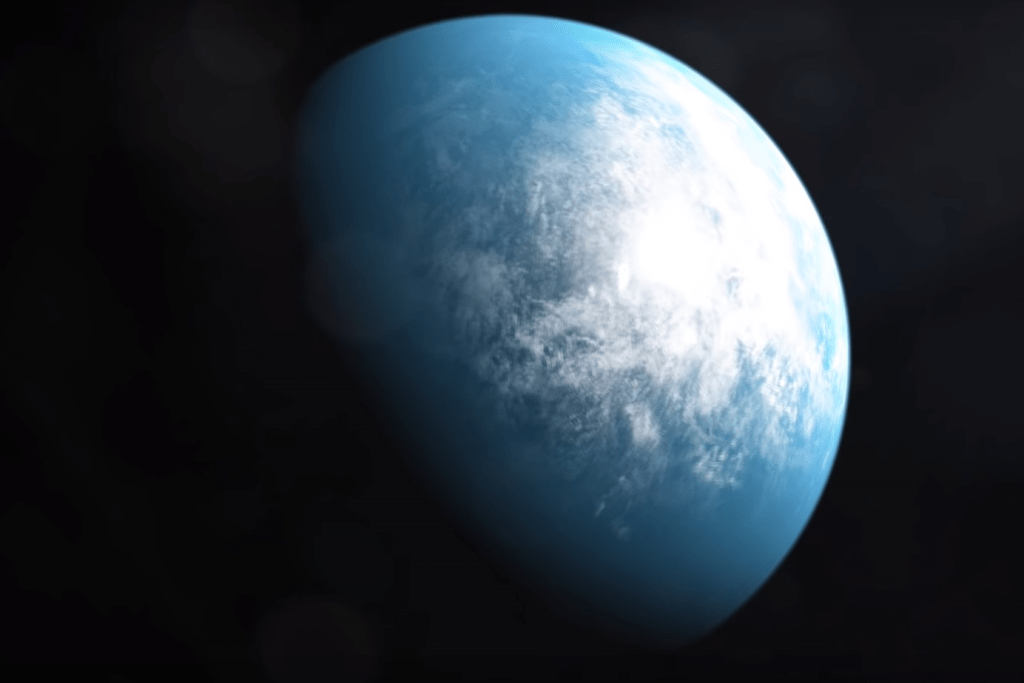
It also means that non-detections of life might have more meaning, too. “Those are the types of planets that we should prioritize for life-detection studies, and those are the types of planets where if we don’t find life, the non-detection might be more meaningful,” Olson said in a press release.
This line of thinking goes against the grain. Usually, the starting point for finding potentially life-supporting exoplanets starts with Earth. Find planets that resemble Earth in many ways, basically Earth analog’s, and we should find the planets we’re looking for.
But that’s not necessarily the case.
Meet the New Earth, Same as the Old Earth?
“This study motivates expanding our search beyond Earth analogues and considering whether or not there might be planets that may be better hosts for life than Earth itself,” Olson said.
The authors write: “As a first step, we use a general circulation model (GCM) to quantify the sensitivity of global upwelling and other biogeochemically significant oceanographic quantities to a broad range of planetary parameters.” Their modeling takes into account a thermodynamic–dynamic sea ice model, and a versatile radiative transfer scheme. It also simulated 40 vertical layers in the atmosphere and 10 layers in the ocean.
The baseline for all this modeling was an analog to Earth in many ways. The simulated planet had the same mass, radius, and surface gravity as Earth. The planet’s star was Sun-like, and the day length and year length matched Earth’s. The planet received the same stellar irradiation as Earth, but their Earth simulacra lacked the real Earth’s obliquity and eccentricity, for simplicity.
The model Earth has about the same distributed land masses and bathymetry as Earth.
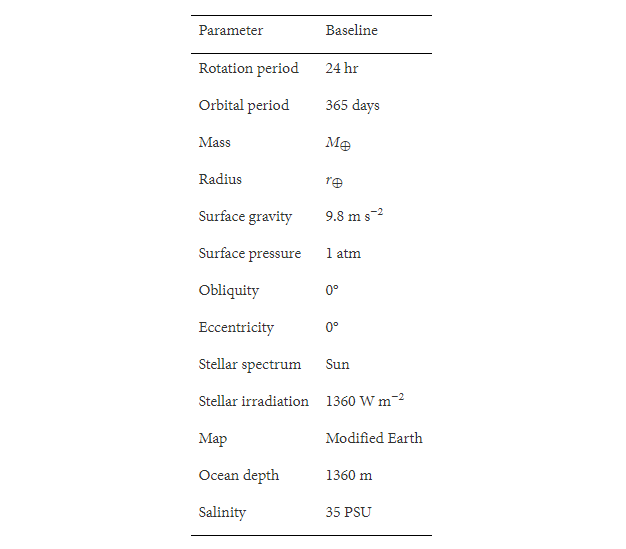
The atmospheric density matched Earth’s, but the composition was different for the model’s purpose. But ultimately, the model planet was Earth-like and habitable.
With their model Earth in hand, the team of researchers were able to monitor the planet’s baseline circulation as they tweaked a number of variables. Those variables included radius, surface pressure, rotation rate, obliquity, stellar irradiation, and ocean salinity.
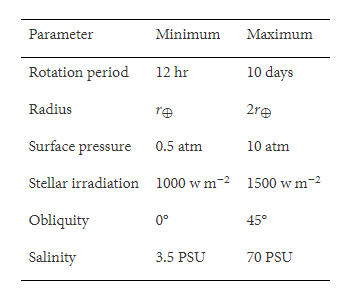
So, What Did They Find?
The study found that upwelling currents increased as the rotation rate of the planet slowed down. But increased upwelling currents are only associated with slower rotation to a certain point. Once day length reached 240 hours, the simulation in fact produced more downwelling, at least in some areas.
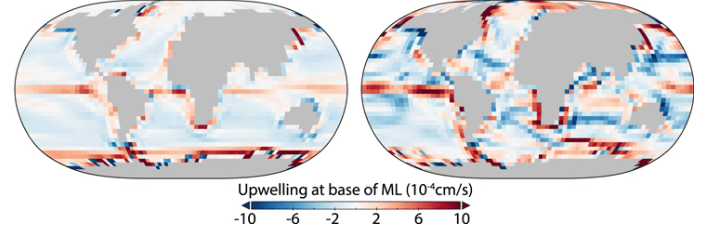
The planet’s surface pressure also had an effect on upwelling currents. They found that as the pressure rose above 1 atm, upwelling increased as well. The effect of the wind becomes more pronounced as the atmospheric pressure increases.
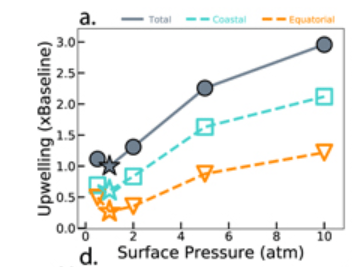
The team also modelled the planet’s radius, though never in isolation. Radius was always changed along with mass, gravity, and surface pressure. The researchers found that on a global scale, upwelling increases with increased radius. It’s a bit tricky though, and as they write in their paper, “… we note that this trend is eliminated when global upwelling is normalized to surface area which increases as r2 (Figure 7(a), solid lines). In other words, upwelling per unit area is nearly constant despite an absolute increase in the global sum on larger planets.”
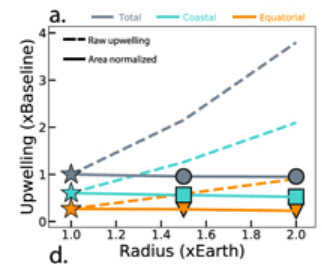
Upwelling also changed as a result of varying stellar irradiation. Up to a point, decreasing irradiation led to increased upwelling. Until sea ice approaches 100%, then upwelling drops off.
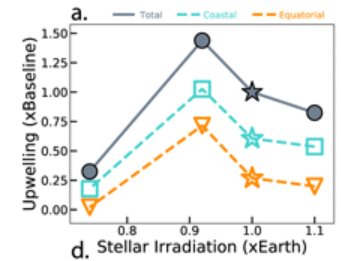
There’s a lot more detail in the study, including how the model planet reacted to changes in obliquity and ocean salinity levels. All in all, it’s an intriguing piece of work that could help guide scientists in their search for potentially habitable worlds. There are a lot of planets out there, and sifting through them requires tools like this.
The hypothesis of this study is “that planets with more efficient nutrient recycling via ocean upwelling will be better hosts for photosynthetic life than planets where nutrients will be sequestered at depth.” That in itself is fairly self-evident, giving what we know about Earth.
By modeling the planetary parameters that influence that critical upwelling, they’ve shown which types of planets may be more suitable for the type of nutrient recycling necessary for life.
There’s still more work to be done with this type of modelling, though. As the authors point out, they didn’t vary land mass or distribution, or ocean depth, or several other factors. And not all of the planetary factors that affect upwelling can be observed from a distance.
But as they say in their conclusion, “Ocean circulation controls the distribution and activity of life on Earth, and it modulates the communication between life in the ocean and the overlying atmosphere. Ocean circulation ultimately throttles the accumulation of biological products in planetary atmospheres and is thus an important consideration for the oxygenation of our planet and the detectability of exoplanet life.”
“Oceans are really dynamic habitats, and we have just scratched the surface here,” Olson said in a press release. “My vision is that people will get excited about this and keep working and exploring even more exotic possibilities.”
Now we just need better, more powerful telescopes to put all of this modeling into action.

